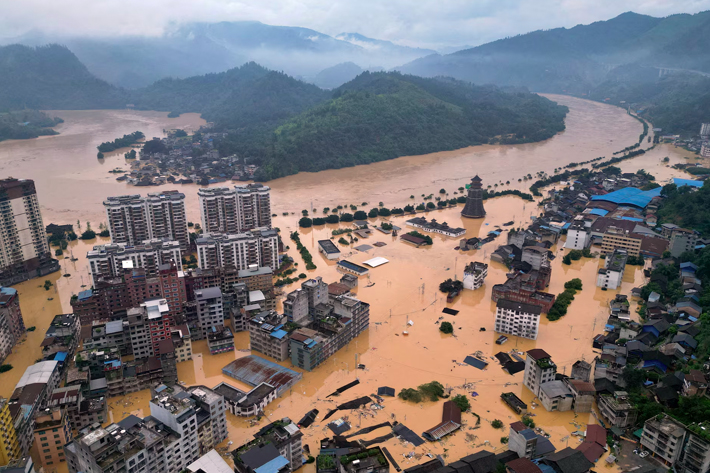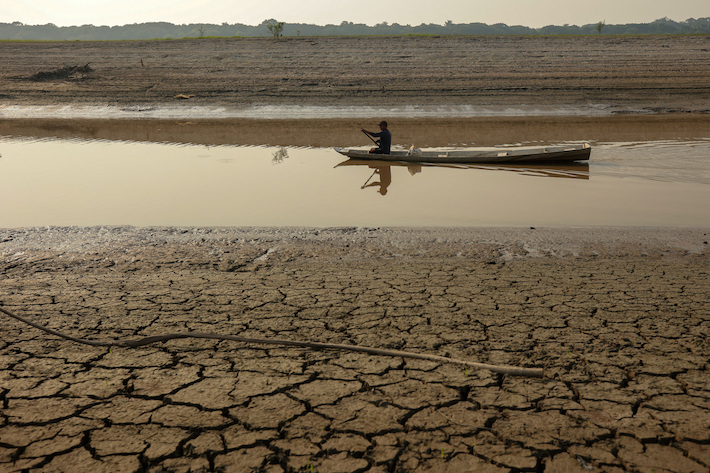Financial losses from natural catastrophes around the world – such as the California wildfires and severe storms in the United States – passed $80 billion in the first half of 2025.
That figure – a preliminary estimate from Swiss Re Institute on Wednesday – is close to double the 10-year average. The Swiss Re Group is a leading wholesale provider of reinsurance, insurance and other insurance-based forms of risk transfer.
Analysts says the enormous figure underscores how the insurance industry has faced a steady rise in weather-related losses in recent years, prompting tighter underwriting, higher premiums and renewed scrutiny of risk models.
ALSO SEE: Three Detained in Taiwan For Alleged Theft of TSMC Chip Secrets
Swiss Re Institute said total insured losses for the year could exceed the $150 billion projection, as natural catastrophe activity is usually higher in the second half due to the hurricane season.
“Forecasts indicate near- to above-average activity, with three to five major hurricanes — above the long-term average of three,” the report said.
In 2024, Hurricanes Helene, Milton and Beryl struck the United States, devastating communities and triggering tens of billions of dollars in insured losses.
Climate risks rising
Faced with escalating climate risks, insurers are retreating from high-risk zones across the US, leaving behind widening coverage gaps and exposing vulnerable communities to growing financial strain.
The Palisades Fire swept through southern California in early 2025, scorching more than 23,000 acres, destroying more than 7,000 homes and business structures and forcing thousands to evacuate.
Swiss Re Institute estimates $40 billion in insured losses from the Los Angeles wildfires, the largest ever from a single wildfire event.
Wildfire losses have climbed sharply over the past decade as rising temperatures, prolonged droughts and shifting rainfall patterns collide with suburban sprawl and the concentration of high-value assets, the report said.
California’s insurance market has come under growing pressure as insurers grapple with a range of climate-related risks, including wildfires, floods and landslides, prompting several to limit new policies or withdraw from parts of the state.
‘Threat to financial stability’
Around the same time as this destructive blaze raged early this year, the Financial Stability Board said insurance was becoming more costly and scarce in disaster-prone areas and “climate shocks” could set off wider market turmoil.
The following month, Federal Reserve chairman Jay Powell said the US central bank had also noticed banks and insurers pull out of risky areas.
“If you fast forward 10 or 15 years, there are going to be regions of the country where you can’t get a mortgage. There won’t be ATMs [and] banks won’t have branches,” Powell told Congress. “I don’t know that it’s a financial stability issue, but it certainly will have significant economic consequences.”
While the US currently has a president who is a notorious sceptic about the severity of global warming, having called climate change a “hoax” and encouraged greater use of fossil fuels, more credible figures, such as legendary US investor Warren Buffett, Canadian PM Mark Carney and European Central Bank president Christine Lagard, have also issued warnings about the risks of extreme weather causing financial havoc.
Günther Thallinger, a board member at Allianz, another big insurer, said in March that global temperatures were fast approaching levels where insurers would no longer be able to operate, creating “a systemic risk that threatens the very foundation of the financial sector”, as “the economic value of entire regions … will begin to vanish from financial ledgers.”
Climate change disasters could be how the next financial crisis starts, a recent report by the FT said, as respected monitors now believe the growing number of floods, wildfires and droughts have the capacity to gravely undermine the global financial system.
- Reuters with additional input and editing by Jim Pollard
ALSO SEE:
China’s Losses From Floods, Disasters in First Half: $7.6 Billion
Bridge to Nepal Washed Away as Flash Floods Rock China
Firms Underestimating Risks From Carbon-Fuelled Climate Change
Carbon Removals Not Growing Fast Enough For Climate Goals
Climate Change Cost China $32 Billion in Just One Quarter
China’s Billion-Ton Coal Expansion Plan Sparks Methane Fears
Booming Solar Puts 2030 Renewable Energy Goals ‘Within Reach’
Floods or Drought: Climate Change Worsens Global Water Woes
China’s Billion-Ton Coal Expansion Plan Sparks Methane Fears
LNG’s Carbon Footprint 33% Bigger Than Coal’s – CC
Forest Fires a Double Whammy for Climate Change Fight – Guardian
Continued Fossil Fuel Investments Put $557 Trillion ‘At Risk’
























